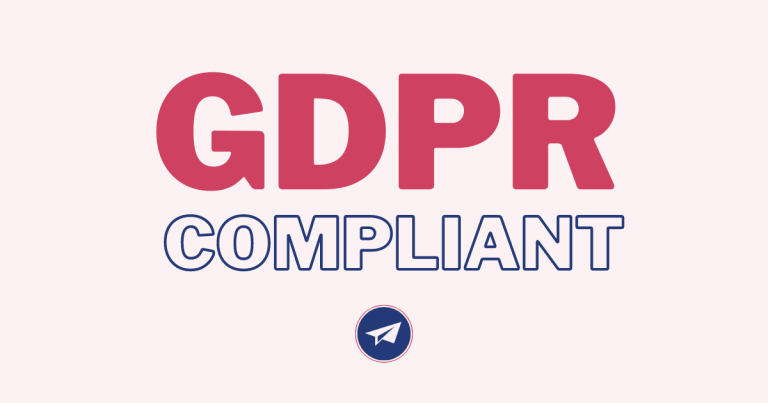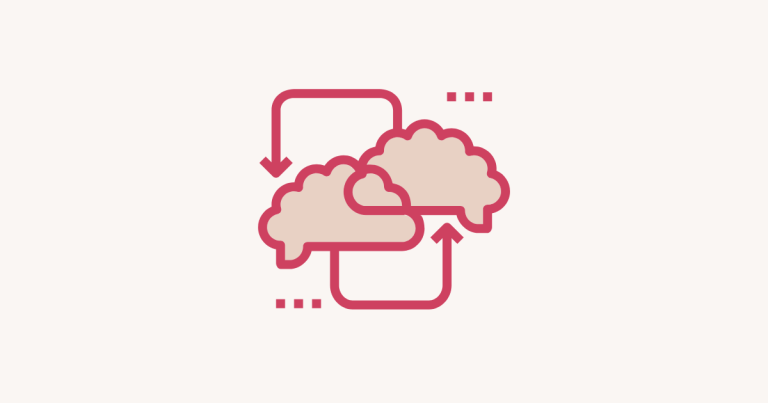The traditional method of hiring new customer service agents, giving them a few days of basic training, and then unleashing them onto the contact center floor sets up your agents for failure. It results in high agent attrition rates, increased training costs, and a group of agents unmotivated to perform above and beyond the call of duty.
This guide sets out a better checklist for customer service agent onboarding. Proper onboarding results in highly trained, highly engaged agents who want to stick with your company through thick and thin.
How to Onboard a New Customer Support Agent
Integrating a new customer service representatives into your team should not be an afterthought. Make sure you take the time to create a plan of action to ensure smooth and effective onboarding. This plan will be especially useful if you are trying to scale your support operations and are in the process of hiring new employees that have to be integrated into the team as fast as possible.
Successful agent onboarding usually includes the following steps:
- Introduce the company culture
- Define support goals and the purpose of the role
- Discuss important support KPIs and metrics
- Introduce the team structure and members
- Assign a coach and mentor
- Product training
- Tool training
- Communication training
- Offer a support toolkit
- Continued support
Let’s take a closer look at each of these steps:
1. Introduce the Company Culture
Before getting into the nitty-gritty of how to perform customer support at your company, it’s important to set down the higher goals and aims of the company. Introduce the types of customers you have and the vital work the customer support agent will do to help them.
Discuss how your processes create an inclusive, diverse, welcoming environment to work in. Introduce the various training programs and coaching the customer support agent will expect to get every step of the way so they feel welcome and supported.
2. Define Support Goals and Purpose
An important part of building employee engagement and a key way to keep agent attrition rates at bay is to make it clear how important the agent’s job is to the company. Outline the type of support they will be expected to perform, and why the company believes it’s so important to get it right.
Many employees will come to you from previous customer service roles. They will have preconceptions about what makes good customer service—preconceptions you might not agree with.
If possible, include specific accounts of how agents have helped customers and examples of how the company has supported and rewarded agents who care about their job.
3. Discuss Support KPIs and Metrics
KPI (key performance indicators) such as average handle time, hold time, and post-call work time are important for call center managers to keep track of. But they can also be intimidating to new staff.
Discuss how KPIs are a guide to keeping a high-level view of how each cog in the wheel is interacting. Show agents everyone has KPIs to meet, even you!
Stress that KPIs are useful for helping you decide how to arrange teams, shifts, and support channels. Emphasize they’ll be used to help find ways the agent can improve through the use of coaching and further training from experienced agents.
4. Introduce Team Structure and Members
As early as possible in the onboarding process, include members of the team that the new agents will work with. It’s often easier for an agent to talk to someone who will perform the same job as them rather than discussing it with their boss or supervisor.
Give the team a heads-up that a new member will be joining and that you want them to do their best to welcome them. Set aside a small amount of time for the new team members to meet the old guard in a relaxed setting, such as a morning coffee break.
The agent will feel better supported from the get-go and feel more at home, even on their first day.
It is also important to introduce to your new hires the structure of your customer service team. By doing so, you will make it clear whom the agent reports to, whom they should turn to for types of support, and the best channels for communicating any problems they have.
5. Assign a Coach and Mentor
Assign a senior member of the team to offer coaching to each new agent. This coaching allows the experienced agent to share their first-hand experience about how to perform the job well. This coaching is not only invaluable to new hires, but it also boosts the confidence, motivation and engagement of your seasoned team members.
Mentoring differs slightly from coaching but is no less important. A mentor can set out a long-term strategy for the new hire’s professional development and help the agent with issues they have not specifically tied to their day-to-day duties. A mentor can often be more emotional support than a coach, acting as a friendly confidant.
6. Product Training
Product training is certainly important to onboarding, but many companies treat it as the one and only step toward training agents on what’s expected of them. Recognize that product training is just one step in ensuring you have employees that offer excellent customer experiences and will stick with your company for the long haul.
For them to understand how best to support your customers, you must first describe your typical user. Discuss who mostly uses the products and services. Consider the use of buyer personas, which offer your agents examples of whom they can expect to deal with.
Discuss why these customers use your products. Different customers can use products for different purposes. Instead of training agents on the features of your products one by one, discuss the various scenarios a customer will use its functionalities for so they have a better context.
Walk through different real scenarios the customer might find themselves in, and why they might decide to contact customer support for help with these scenarios.
7. Tool Training
As part of training on how to give support, customer service agents must also be trained on the tools you offer them. Training should include how to offer support using the tools, how to communicate with customers, and how to look up resources they need.
8. Communication Training
Each company has its own style. Your branding will reflect how you expect customer support agents to engage with customers. As part of training, include details on what is OK and what isn’t when talking with customers.
Language
Include any specific language guidelines you want agents to adhere to. There may be specific topics or terms you want agents to avoid using from a legal or compliance point of view, for instance. Or, if you don’t want agents to use slang or abbreviations in company correspondence, let them know now.
Voice and Tone
Your agents are essentially speaking for your company, so it’s important they mirror the tone and voice your brand is known for. A bank might prefer to keep a formal, professional tone of voice, for instance, whereas an apparel store might have a much more relaxed tone in its correspondence. Give agents examples of the voice and tone you expect from them.
Writing Style Guide
A writing style guide can include all these details as well as be a resource for how you want things to be written. Should agents add bold and italics to correspondence? Should they use US or UK spelling? What are the company’s preferred fonts and line spacing? Ensuring all agents use the same style in correspondence will make your company feel more cohesive to customers.
9. Support Toolkit
Over the first few days and weeks, agents are bombarded with new information. Much of all these details are prone to going in one ear and out the other, so it makes sense to offer a support toolkit that includes all the important details an agent is expected to remember.
A support toolkit should be as succinct and easy to use as possible while pointing agents to the resource they need.
Documentation
Agents need access to several types of documentation:
- Guides on how to use the products and services your company offers, so they can adequately support customers.
- Guides on how to use the software and tools you provide them.
- Documentation on the proper procedures they must follow to perform their job.
Preferably, make this information searchable so agents can quickly find the specific documentation they need.
Templates
Templates for answering questions should be available, preferably as part of a central helpdesk software but at least available for agents to cut and paste.
These templates not only save agents a massive amount of time as they don’t have to write the same answers repeatedly, but they also serve as examples of the quality of answers you expect your agents to write each time.
Learning Materials
Besides the in-house documentation you offer agents, make sure they are well-versed on the knowledgebase articles, blog posts, product videos, and FAQs available on your website and other sites. These not only serve as excellent learning materials, but the agent can also direct customers to these resources in the future.
Other Resources
Customer service agents are ingenious at coming up with ways to automate, simplify, and speed up the job they perform. If other tools like macros and automation software are available, try to make them available to all members of the team.
Ask your experienced agents about the tools they use the most and include details of these tools in your support toolkit.
10. Continued Support
With a coach, mentor, and trainer in place, your agents should feel supported. But continue to support agents as they come across new challenges in the workplace.
Agent retention is one of the key strategies to reduce customer service costs, so ensure everyone has an option for progression within the company and knows how best to communicate any problems they’re having at work that are causing them to feel discouraged or demotivated.
Do I Have to Offboard Agents?
Agent offboarding doesn’t get as much attention as onboarding. Why spend resources on an agent that’s leaving the company? In fact, when an employee quits, it deserves your attention.
Not only is it important to ensure a fast transfer of skills to new staff, but it can also be a goldmine of information on how you can improve the experience for agents in the future. For if your contact center floor is a legitimately good place to work, why are employees deciding to leave?
It’s not unheard of for former employees to return in the future. And they can be ambassadors for your brand if they leave on good terms.
Agent Offboarding Checklist
Our outline for an agent offboarding checklist goes as follows:
- Discuss the departure with the agent and the team
- Ensure all important knowledge is transferred by the outgoing agent before they leave
- Recover company assets from the agent
- Revoke company access
- Perform an exit interview
Let’s look at these in turn.
Discuss the Departure
As soon as you know an agent will leave the company, thank them for their contribution and offer them congratulations if they’re moving on to another position. Let them know what is expected of them over the following days or weeks.
Communicate with the rest of the team regarding the departure, with a focus on how things will move forward. Minimize a departure’s disruption by stamping out gossip and making it clear things will continue as usual.
Ensure Knowledge Transfer
A replacement for the agent will be required immediately, whether that means a new hire or the distribution of the agent’s tasks among the current team.
Whenever possible, get the exiting employee to train a replacement on how to perform their job before they leave the company. After they leave the company, it becomes 10 times harder to recover those gold nuggets of information that aren’t written in any agent training documentation.
If the employee will leave suddenly before you’ve had time to source their replacement, ask them to write a document on what their job entails. Include details such as:
Daily routine
Tasks that should be prioritized
- Contact details of all relevant customers and suppliers
- Logins for all software used
- Tips for performing the job efficiently
In most cases, the outgoing employee will be happy to detail all the many things they oversaw, with most employees taking pride in how they did their job to a high standard.
This information is also extremely useful for identifying gaps where processes can be improved, as the agent will often write about the issues that bothered them the most, perhaps even causing them to quit their role.
Remove Agent Profile from All Systems
Though most companies feel they are very confident ex-employees could not access corporate applications, the figures don’t bear this out. 20% of organizations state they have experienced data breaches by ex-employees in a survey, with 48% of organizations saying former employees still had access to the corporate network in some way.
Data breaches are a huge issue for company security, so you must have a strong process in place that removes any agent access from the system if they are no longer working for the company. Ensure this process is periodically checked for relevance, as the systems you use will continually evolve.
Recover Company Assets
Company assets such as cars, phones, laptops, and computers should be recovered before the agent leaves the company. Consider other paid assets too, such as access to third-party online services or subscriptions to industry journals.
Including all these assets in a checklist you can run through for each employee makes sure you never miss anything.
Perform an Exit Interview/Debrief
Thank the leaving employee for their contribution and congratulate them if they’re moving on to a new role. Make it clear that any discussion you have now will be completely confidential, open, and focus on the employee’s personal opinions. Preferably, exit interviews should be done on neutral grounds, such as a separate meeting room rather than your office.
The exit interview should be separate from the rest of the offboarding process so you can concentrate on its open, confidential manner. Avoid including the agent’s supervisor in the meeting.
Some questions to consider asking in an exit interview include:
- What prompted you to leave the company?
- What could we change that would lead to you staying?
- Did you voice these concerns before? Were they adequately handled?
- How was your relationship with your supervisor?
- What can you say about the team atmosphere?
- Do you think your onboarding experience reflected the position?
- Did we do enough to allow you to progress within the company?
- Would you recommend us to a friend considering working here?
- How would you summarize the company culture?
Keep questions open-ended and allow the exiting employee to fully voice their opinions. Avoid disagreeing with them; just take notes you can use to improve the onboarding and culture of the company in the future.
Conclusion
The onboarding process for new customer support agents is vital to setting up agents for success. Not only can you teach them about company culture and what’s expected of them, but you can also show them that if they’re willing to work hard at the company, you’re willing to support them every step of the way.
Have an offboarding process in place to minimize the disruption of employees leaving. This includes performing an exit interview you can use to find flaws in the company’s onboarding experience so you can improve it for future employees.
Did you like the post?
You might also like:

Surveypal
Everything you need to lead and improve your customer experience. Learn more at surveypal.com, or







